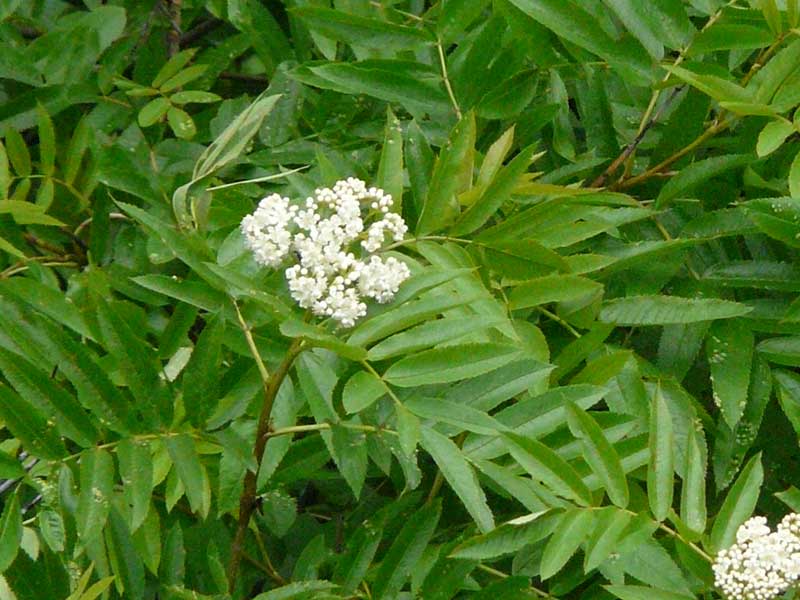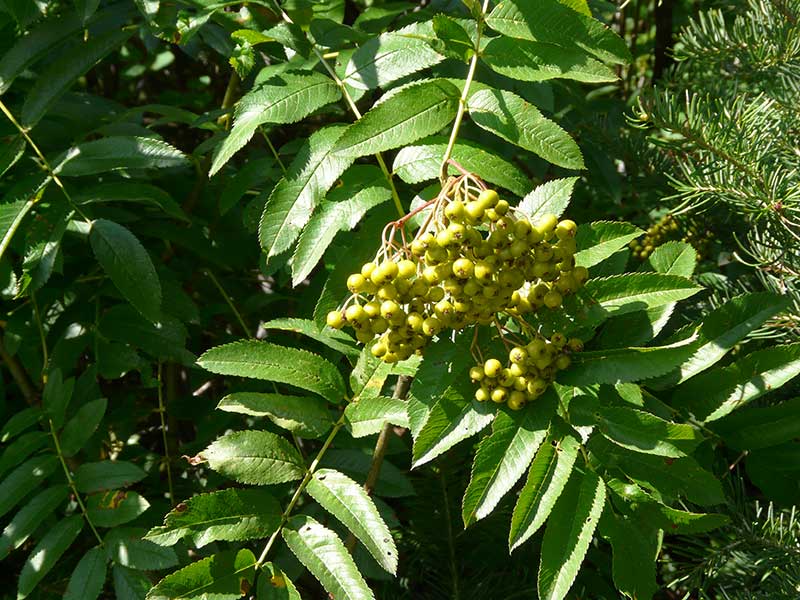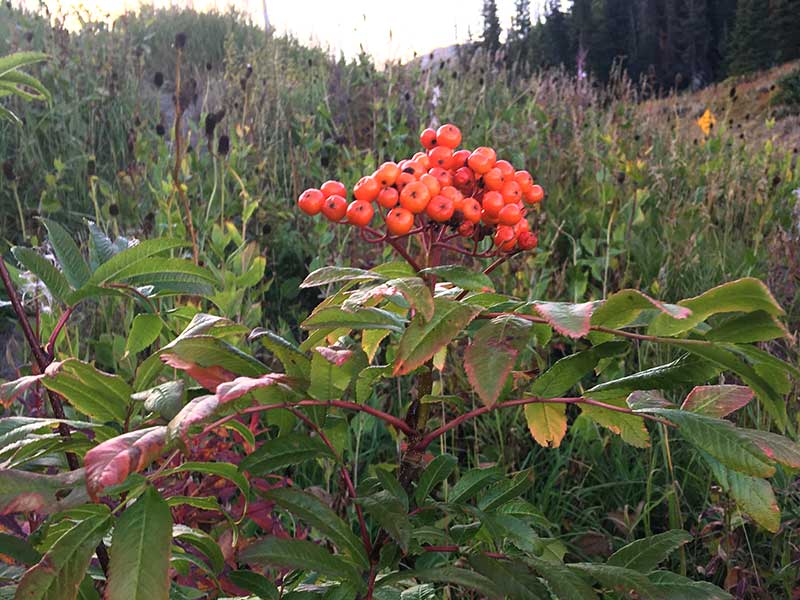Sorbus scopulina / western mountain ash
- moderate sized shrub with pinnately compound leaves
- 9-13 leaflets per leaf (usually)
- teeny white flowers in large rounded clusters
- yellow berries in August become bright red in September
- rocky hillsides, creek sides, open woods
Also known as: Greene’s mountain-ash, whitebeams, service tree, rowan
Western mountain ash, rowans, are moderate sized, deciduous shrubs or small trees up to about 15 feet tall. They have an alternate branching and leaf arrangement and grey-ish bark. The leaves are pinnately compound with 9-13 leaflets, each of which is sharp-pointed, and finely toothed along most of the margin.
Rowans, or mountain ashes, are found on rocky hillsides, in open woods, or along streams, usually in small clumps. Usually, they aren’t found in wetlands, and usually they are at higher altitudes, but not on the bare rocks or open alpine meadows. Good examples can be found at the top of both Teton Pass and Pine Creek Pass near the parking areas. They are also along the FS roads along several of the creeks in the Big Holes.
Rowans bloom in late June (in the Valley) and into early July. The flowers grow in large, rounded, mostly upright clusters (panicles). They are white and each has 5 petals. They are said to smell like hawthorn, in case that helps.
The absolutely best way to recognize rowan, of course, is to see the berries in the fall. They are brilliantly scarlet, and hang on even after the leaves are gone, until the birds or animals eat them.
Rowans, a.k.a. rountree, were important trees in Celtic and Norse mythology, albeit these are a different species from ours (Sorbus aucuparia). No one should doubt that our species has equally great powers. Rowan is a magical tree and gives protection against malevolent beings, and prevents travelers from getting lost. In both of those contexts, rowan was the tree from which the doll, Hitty, was made… and memorialized in the 1930 Newberry Award winning book, Hitty – Her First Hundred Years, by Rachel Field (1929). This is available at the Valley of the Tetons Library.
Rowan trees, especially planted by the front door, are good for warding off witches. They are especially potent if growing in the crook of an oak or a crack in a rock (“flying rowans”). They are also good protection against fairies; if a rowan cross is put over your door, it is safe to witness fairy festivals. Rowan sprigs also protect cows and their milk from evil spells. Rowan crosses, made without the use of a knife and attached to cattle at May Eve, protect them for the year.
In Norse mythology, the rowan was the tree from which the first woman – the goddess Sif – was made after Thor clung to it for safety from a raging torrent.
Because of the strength of its wood, rowan is also sought after for walking staffs, magic wands and dowsing rods.
For more on the power of rowan trees, look, for example, to Trees for Life.
| Color | |
|---|---|
| Family | |
| Blossom size | |
| Inflorescence size | |
| Inflorescence type | |
| When? | |
| Where? |






